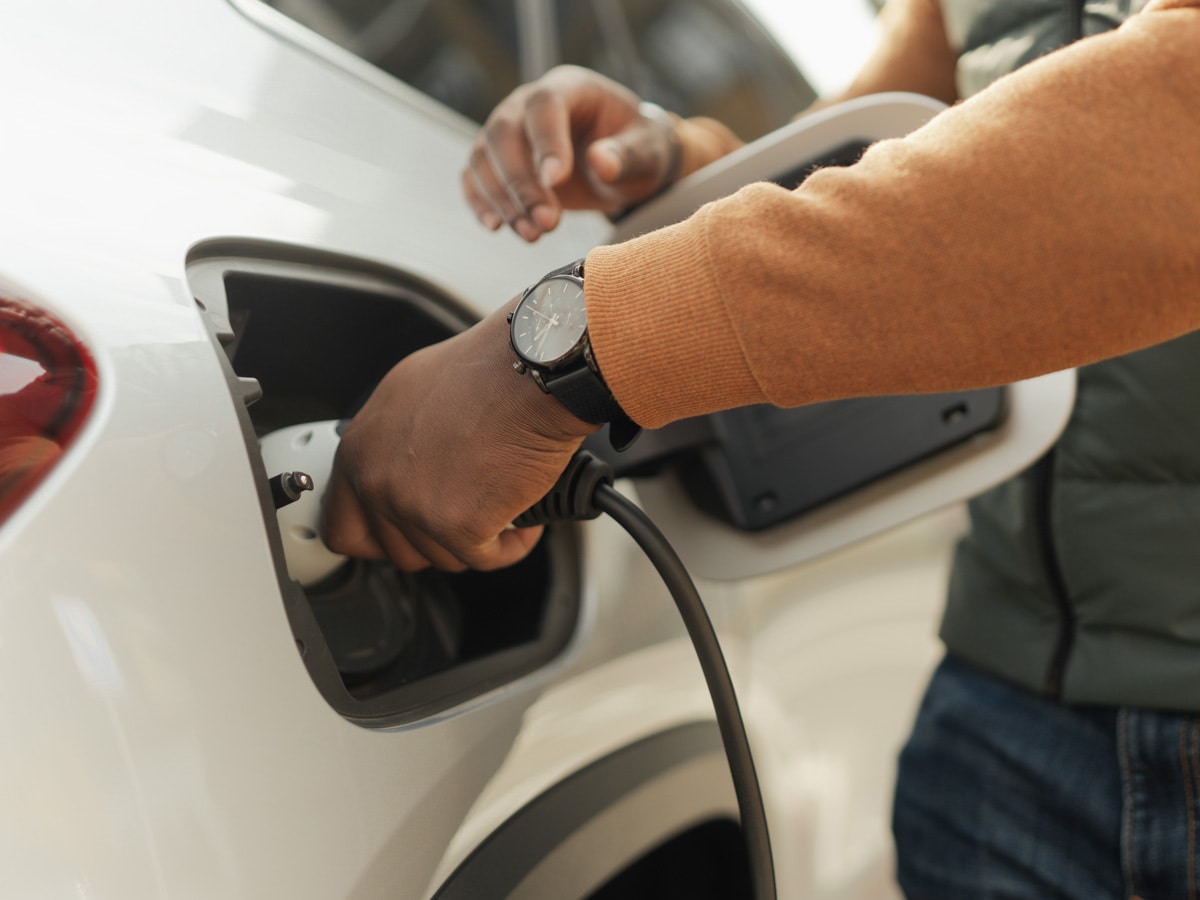Macroeconomic tailwinds include a global push for decarbonisation, and the electric vehicle (EV) industry is expected to grow at a CAGR of 17.3% through the end of the decade. As one of the major incumbents, Tesla is leading the charge to bring prices down, in the process causing headaches for its rivals in the space.
- Tesla’s North American Charging Standard snowballs.
- Experts predict a battery material supply crunch.
- How to invest in EVs: the Global X Autonomous & Electric Vehicles ETF offers exposure to stocks in the EV industry. The fund is up 21.6% in the last six months.
The future of transport is electric. According to an April report by the New York Times, proposed US legislation could ensure that two thirds of all automobile sales in the country will be of EVs by 2032. Meanwhile, several individual states have legislated bans on new internal combustion engine (ICE) vehicle sales, which will kick in over coming years.
“The momentum in the EV sector is underpinned by global efforts to reduce carbon emissions, advancements in battery technology, and robust government incentives,” Sylvia Jablonski, CEO and chief investment officer at Defiance ETFs, told Opto.
Vantage Market Research estimates that the global EV market will see a CAGR of 17.3% between 2023 and 2030, eventually growing to $693.7bn.
The global shift towards decarbonisation is a key tailwind for the theme.
Figures from Exponential Roadmap published in 2019 showed that the global transport sector emitted 8.6 gigatons (gt) of CO2 per year, approximately 16% of total global emissions.
Gabriela Herculano, CEO of the iClima Global Decarbonisation Enablers UCITS ETF [CLMA], told Opto that “around 1.3 gt of CO2 equivalent out of the 30 gt of cumulative reduction needed by 2030… could come just from EVs”.
EV producers such as Tesla [TSLA], BYD [1211.HK], XPeng [9868.HK], Nio [9866.HK], Rivian [RIVN] and Lucid [LCID] have the greatest potential for decarbonisation, and, furthermore, “have the advantage of not having to deal with legacy issues from ICE manufacturing”, according to Herculano.
In fact, fleet electrification poses a headache for some of the more established carmakers: Kieran Kirwan, director of investment strategy at ProShares, told Opto that “most of the big auto manufacturers are losing money on their EV production”.
Public chargers, as standard
Tesla, one of the most recognisable names in the industry, is making strides towards unifying the charging standard across North America. Ford [F] announced in May that its EVs would gain access to Tesla’s rapid charging Supercharger network via the North American Charging Standard (NACS) that Tesla introduced in November 2022.
Since then, enthusiasm for the scheme has snowballed. General Motors [GM] were the next to sign up to make its EVs compatible, giving the network a dominant position in the US EV market, of which Tesla, Ford and GM together comprise 72%. In the weeks that followed, Polestar [PSNYW], Rivian and Volvo [VOLV-A.ST] joined the standard, with Mercedes-Benz [MGB.DE] becoming the first German carmaker to sign up in July.
Such expansion of the charging infrastructure is “essential for mass adoption of EVs”, according to Konrad Sippel, head of research at Solactive, index provider for the Electric Vehicle Charging Infrastructure UCITS ETF [ELEC.L].
Sippel told Opto that EVs are currently purchased mainly “by relatively affluent early adopters, who typically have access to home and/or office charging options, meaning that in day-to-day use they are less reliant on public charging infrastructure”.
Sippel, extrapolating from EU research advising a ratio of at least one public charging station for every 10 EVs, suggests that the number of public charging stations will have to multiply “15–20 times over today’s offering” in order to meet the projected expansion of the EV fleet by 2030.
Tesla sets the price pace
Even as established automakers struggle to break even on their electrified lines, increasing EV market penetration requires a fall in prices. Tesla has led this move; since late 2022, the company has looked to reduce the prices of its cars, often at the expense of operating margin.
This price war is impacting Tesla’s competitors. Luxury EV maker Lucid noted in a July production update that first quarter revenue would be below expectations thanks to the impact of Tesla’s new pricing strategy. With supply chain issues also hampering production volumes, Lucid’s share price fell 11.8% on 12 July in response to the update.
While falling EV prices are a problem for Lucid, price hikes are causing legal issues for Rivian. A California judge announced on 6 July that a group of shareholders suing the company could take their case to court. The case claims that Rivian defrauded the investors by concealing the fact that its R1T pickup truck and the R1S SUV were underpriced in the runup to its 2021 IPO.
The battery supply crunch
EVs are, however, only as effective as their batteries, and supply issues could prove a headwind for the theme over the coming years.
“Lithium ion battery demand for the automotive sector grew by 65% in 2022,” according to Kirwan. “By 2030, we're going to start to see some significant supply shortages… by 2035, supply is expected to fall short of the demand curve by over 20%.”
Lithium isn’t the only mineral being impacted. The ProShares S&P Global Core Battery ETF [ION] tracks an index composed of lithium, cobalt and nickel miners; these metals, according to Kirwan, are all expected to face a supply crunch as demand outstrips supply.
Jacob White, ETF product manager at Sprott Asset Management, added rare earths, silver, graphite and manganese to the list of materials that are integral to EV batteries, with graphite being “one of the most significant components of the EV battery by weight”.
Echoing the story of lithium, White told Opto that, “Among these minerals, one trend remains the same: supply is unlikely to meet the projected demand.”
Are you finding this content insightful? Leave us some feedback here.
Innovative solutions to drive EV theme
One factor mitigating against this looming supply crunch could be new technological solutions that flatten the demand curve.
“Battery chemistries are being tested now that would require smaller quantities of these core battery metals,” says Kirwan.
Advances in battery chemistry also have the potential to transform the performance of EVs. In February, researchers at the Illinois Institute of Technology registered a breakthrough in the development of lithium air batteries, a more efficient power source which could render lithium ion batteries obsolete.
Battery ranges are also set to increase. Toyota [7203.T] unveiled its solid-state battery technology in July, which it claims has a 745-mile range and 10-minute charging time, although it is more lithium-intensive.
How to invest in electric vehicle stocks
ETFs, or exchange-traded funds, offer an economical and diversified way to invest in a variety of stocks within a particular theme.
Fund in focus: the Global X Autonomous & Electric Vehicles ETF
The Global X Autonomous & Electric Vehicles ETF [DRIV] tracks the Solactive Autonomous & Electric Vehicles Index. As of 30 June, 36.2% of the fund’s assets are in the consumer discretionary sector, 30.7% are in information technology (IT), 15.3% are in industrials, 12.8% in materials, and 5.0% in communication services.
DRIV is up 21.6% over the past six months.
The Electric Vehicle Charging Infrastructure UCITS ETF tracks the Solactive Electric Vehicle Charging Infrastructure Index, and thereby provides exposure to companies set to benefit from increased demand for EV chargers. As of 30 June, it is focused primarily on US companies (48.78%), but has significant holdings in companies based in the Netherlands (14.64%), South Korea (9.40%) and Spain (8.98%), among others.
Over the past six months, the fund is down 19.2%.
The iShares Self-Driving EV and Tech ETF [IDRV] tracks an index of companies involved in EVs, battery technologies and autonomous driving technologies. As of 11 July, 60.56% of its holdings are in consumer discretionary, 17.36% are in materials, 14.30% in industrials and 7.22% are in IT.
IDRV is up 16.6% in the past six months.
Disclaimer Past performance is not a reliable indicator of future results.
CMC Markets is an execution-only service provider. The material (whether or not it states any opinions) is for general information purposes only, and does not take into account your personal circumstances or objectives. Nothing in this material is (or should be considered to be) financial, investment or other advice on which reliance should be placed. No opinion given in the material constitutes a recommendation by CMC Markets or the author that any particular investment, security, transaction or investment strategy is suitable for any specific person.
The material has not been prepared in accordance with legal requirements designed to promote the independence of investment research. Although we are not specifically prevented from dealing before providing this material, we do not seek to take advantage of the material prior to its dissemination.
CMC Markets does not endorse or offer opinion on the trading strategies used by the author. Their trading strategies do not guarantee any return and CMC Markets shall not be held responsible for any loss that you may incur, either directly or indirectly, arising from any investment based on any information contained herein.
*Tax treatment depends on individual circumstances and can change or may differ in a jurisdiction other than the UK.
Continue reading for FREE
- Includes free newsletter updates, unsubscribe anytime. Privacy policy





